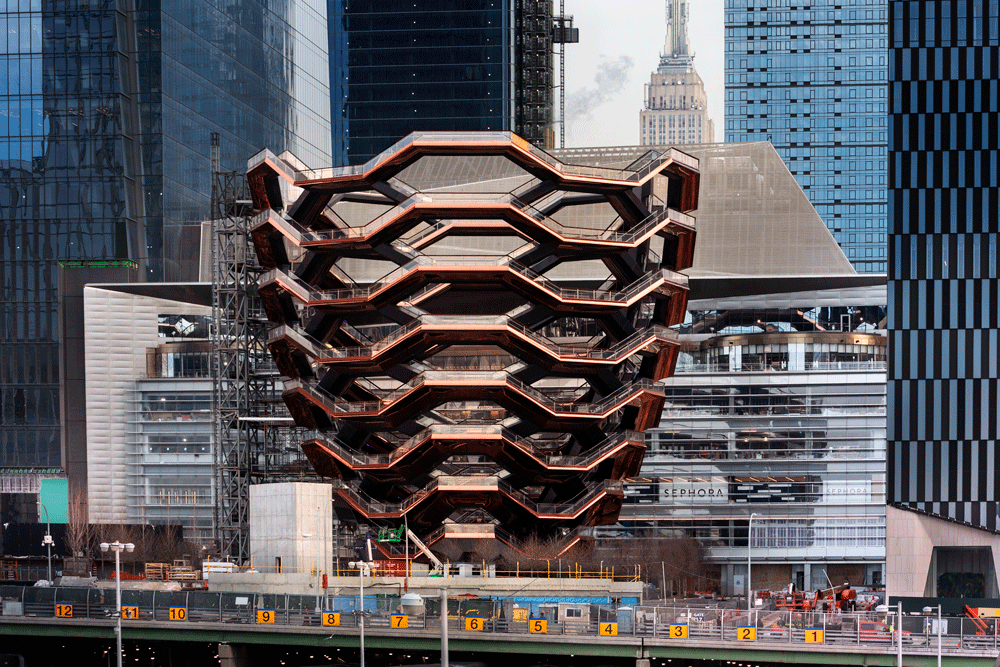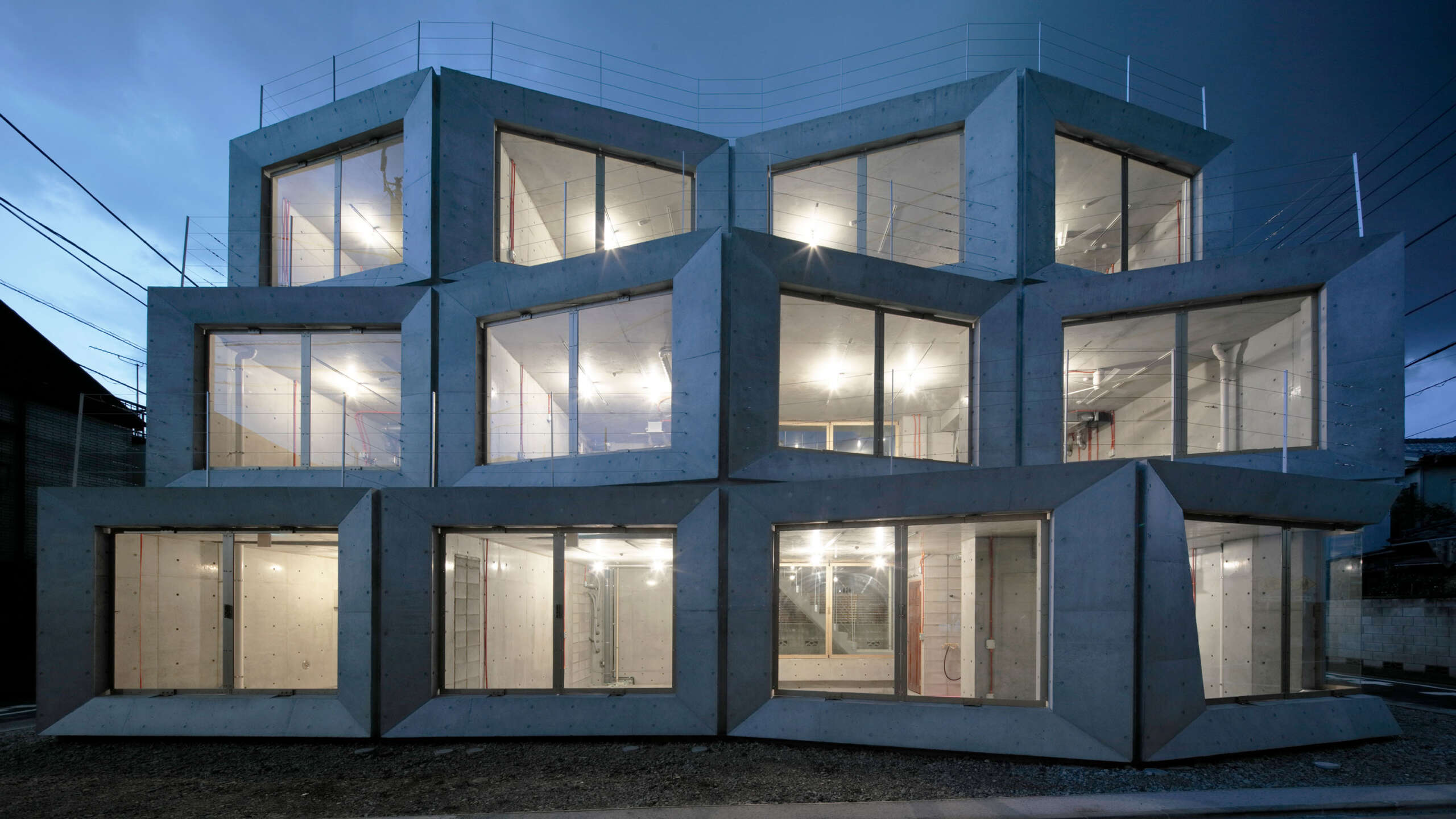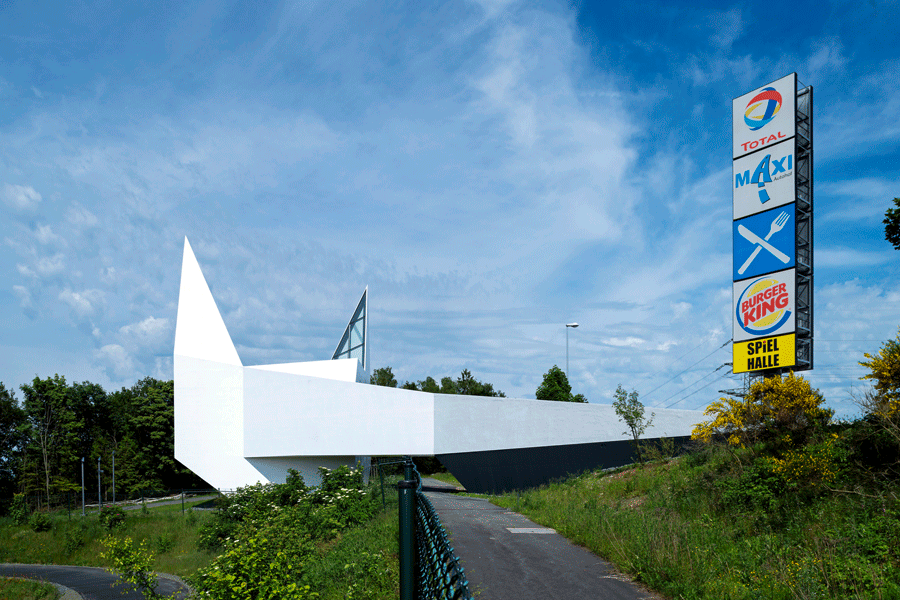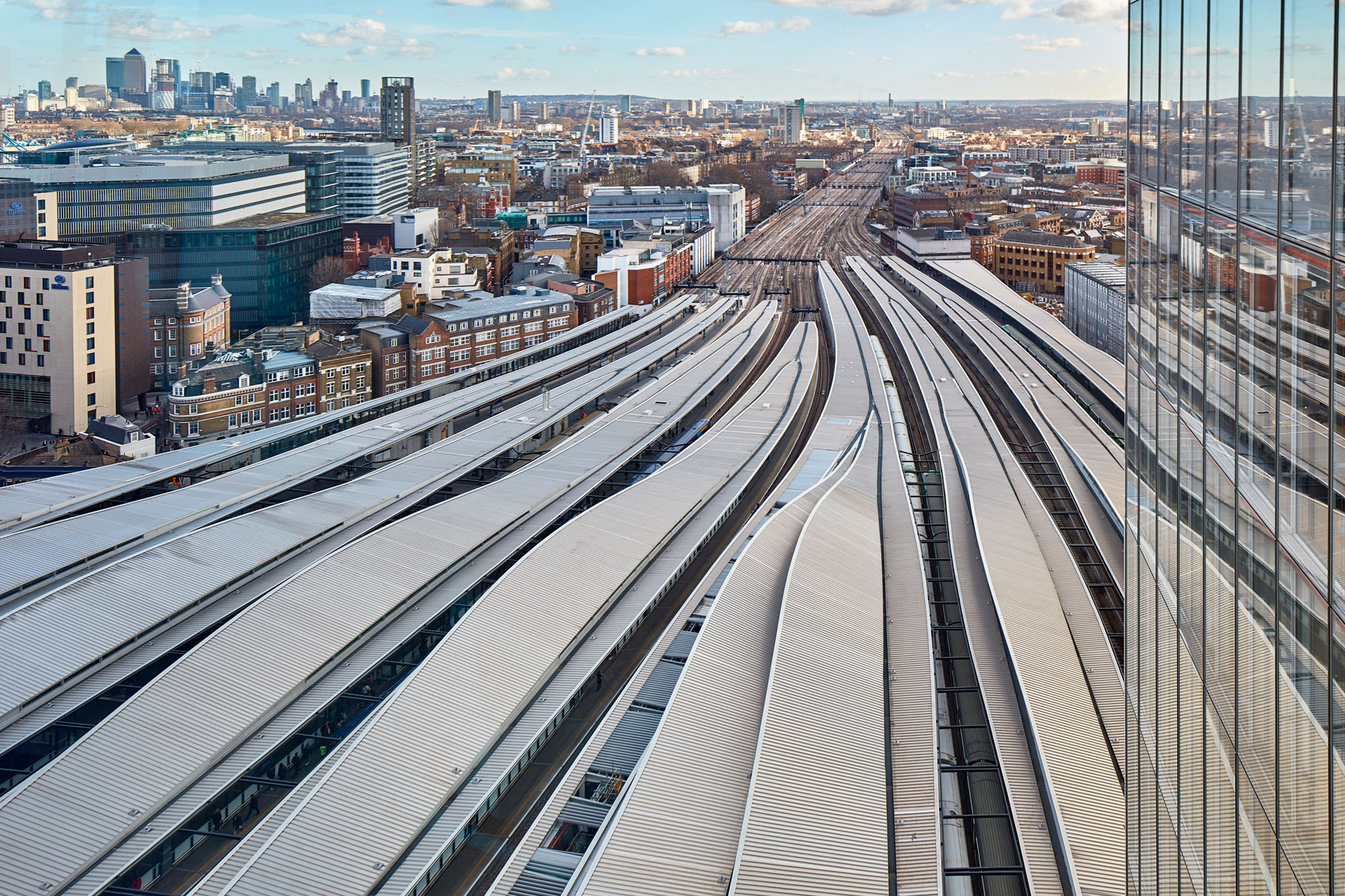
LONDON BRIDGE STATION | GRIMSHAW
Description provided by Grimshaw. London Bridge station has received its royal re-opening by His Royal Highness Prince William, the Duke of Cambridge. The celebration marked the end of a £1bn redevelopment project which has transformed the station, catalysing the London Bridge Quarter and connecting millions more passengers to the capital’s transport network.
The station is the lynchpin of the Thameslink Programme’s government-funded commitment to improving London’s transport infrastructure between the north and south of the city. Its grand opening marks the final chapter of the station’s ambitious redevelopment which has been a collaborative effort between engineers Arcadis and WSP, who partnered for a joint venture, and architects Grimshaw, Costain, and Network Rail.
Construction started on site in 2013, and since then the design team has worked together to resolve the technically challenging project in both scale and demand. The resulting design gives careful consideration to its heritage context and surrounding communities, as well as its practical status as one of the UK’s most used stations. Due to a modular design technique with off-site construction, the station was open to the public throughout the redevelopment.
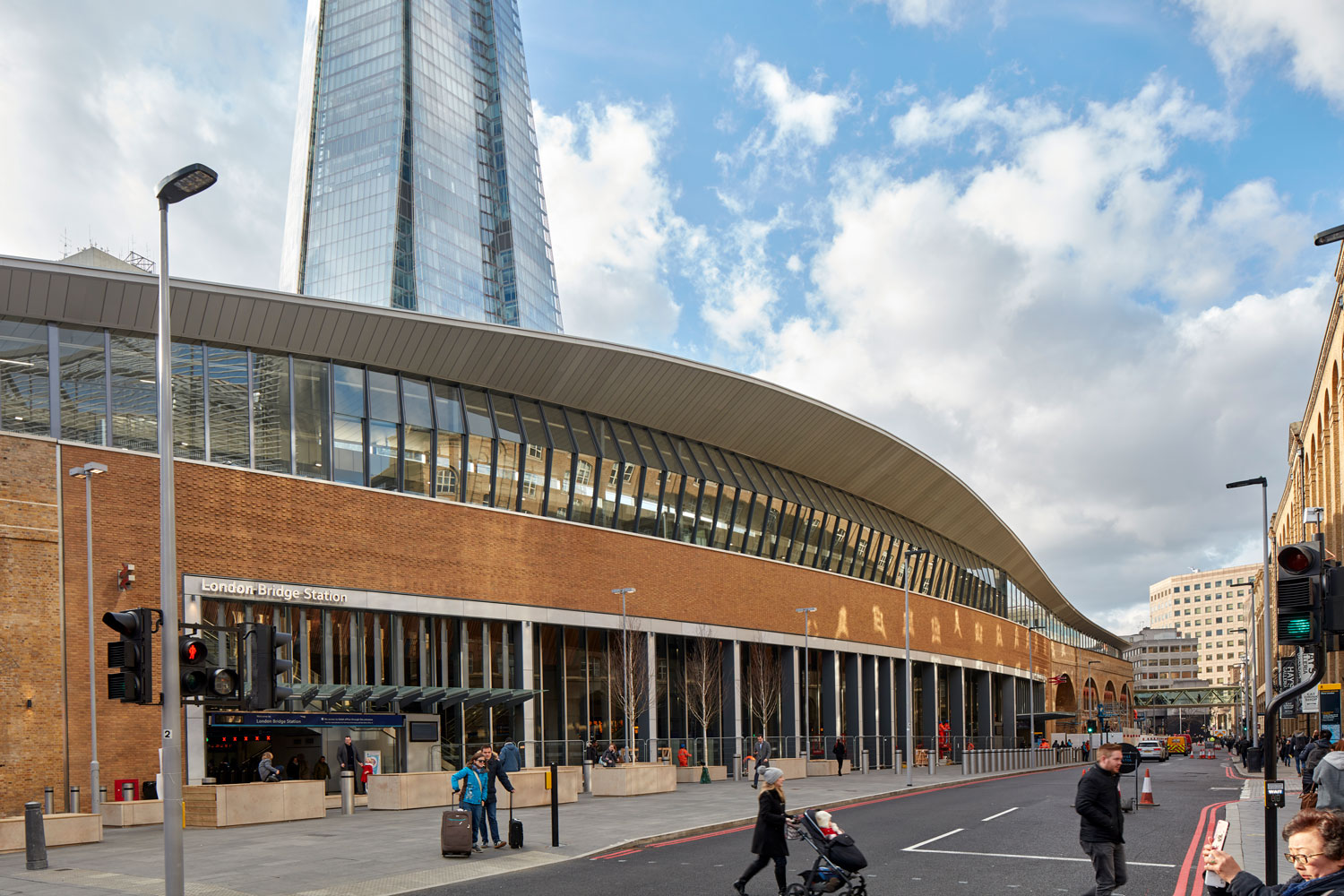
London Bridge station is designed to regenerate Southwark with a permeable design linking the station to the public realm at multiple points. Two new entrances on Tooley Street and St Thomas Street provide a modern response to nearby Victorian arches, seamlessly marrying the old with the new and demonstrating the station’s status as a quintessential London building.
There are two key architectural concepts for London Bridge station. The first provides an expansive concourse and civic space that can accommodate increased passenger numbers and facilitate a quicker and easier interchange. Larger in size than the pitch of Wembley Stadium, the new concourse is 80m wide and 165m long and provides a generous public space which accommodates 50 million annual journeys and creates an environment where visitors can spend time in between travel with an array of high-quality retail and café offerings.
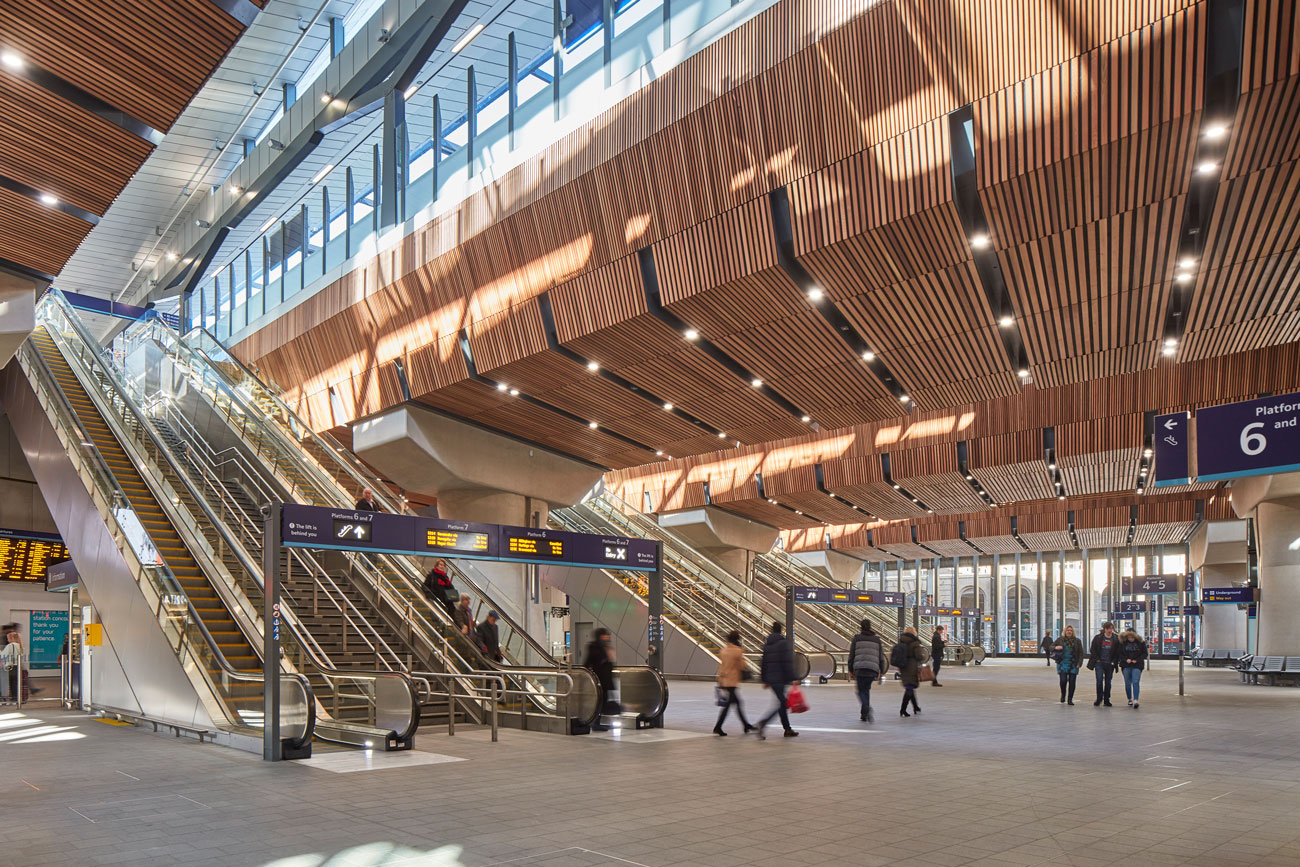
Another key architectural concept was to design with construction in mind; London Bridge is a major interchange and only two platforms at a time could be removed. Grimshaw designed the scheme to be modular and constructed off-site wherever possible, and this can be seen in the development of the roof as a series of ribbons which comprise 1,200 pre-fabricated cassettes. The canopies are designed to be read as one structure with unifying roof lights in the concourse to signal the importance of the space.
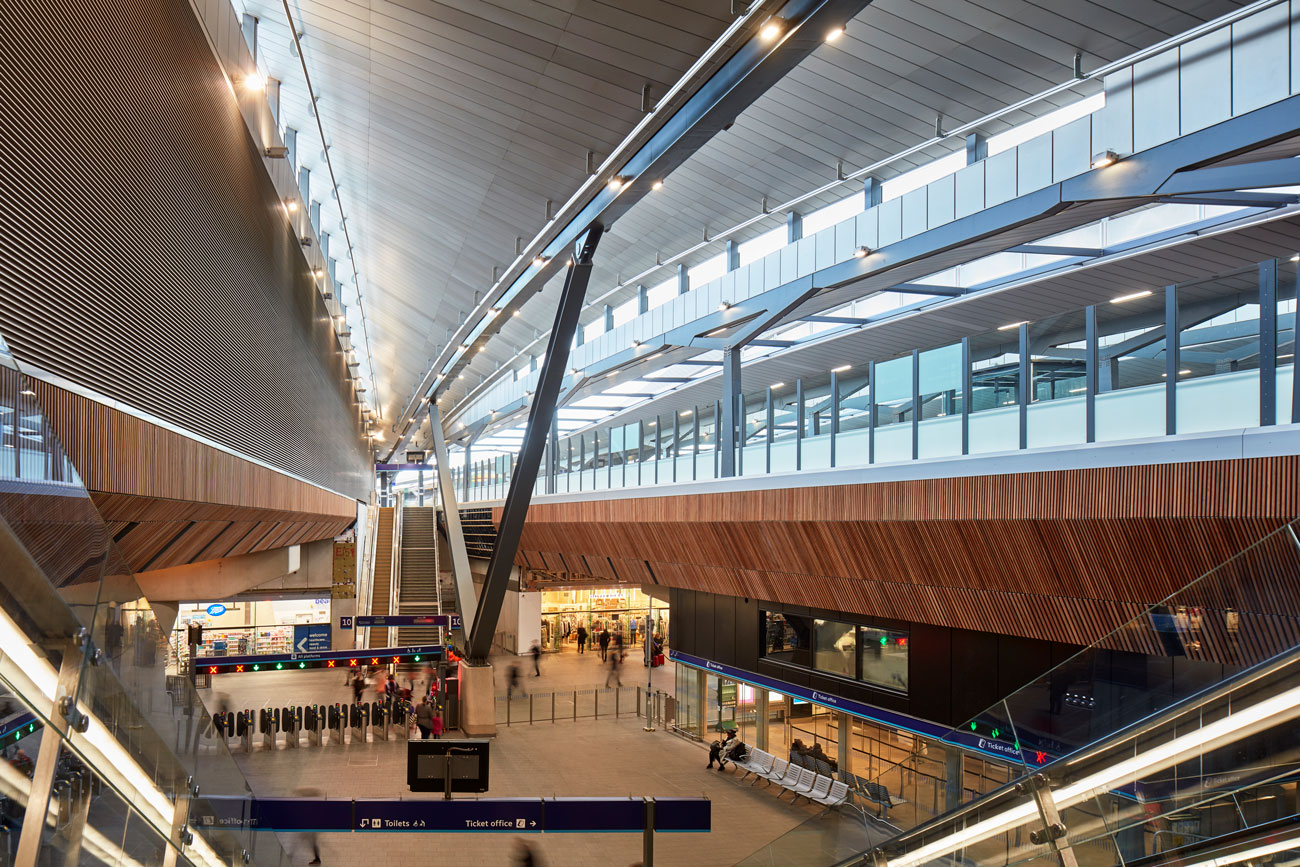
Engineered elements including bridge deck columns, crossheads, and Y-shape columns are expressed and actively celebrated. At the more ‘human scale’ and to balance the grey and steel palette, warm materials bring warmth to the space, such as the red cedar timber soffit in the concourse.
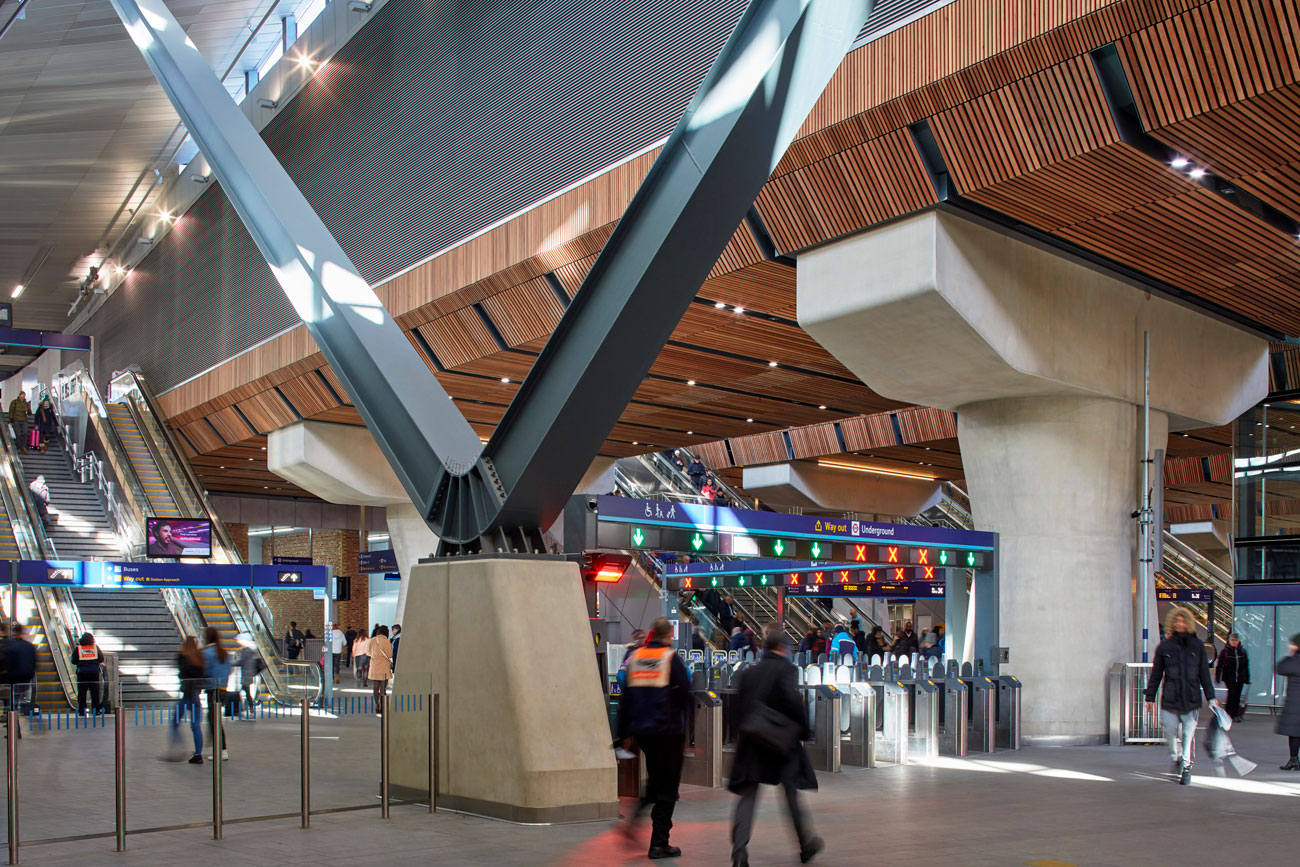
Mark Middleton, Partner at Grimshaw said, “The successful delivery of London Bridge station is a highly complex feat of design and engineering. As architects, our vision for the station was to create a great civic space that connected two communities, and respected its Victorian heritage whilst providing a modern, functional and enjoyable experience for train passengers. It is a bold scheme, and its below track concourse is not only unique but also the largest in our country; it is a transformational project for Southwark and for London.”
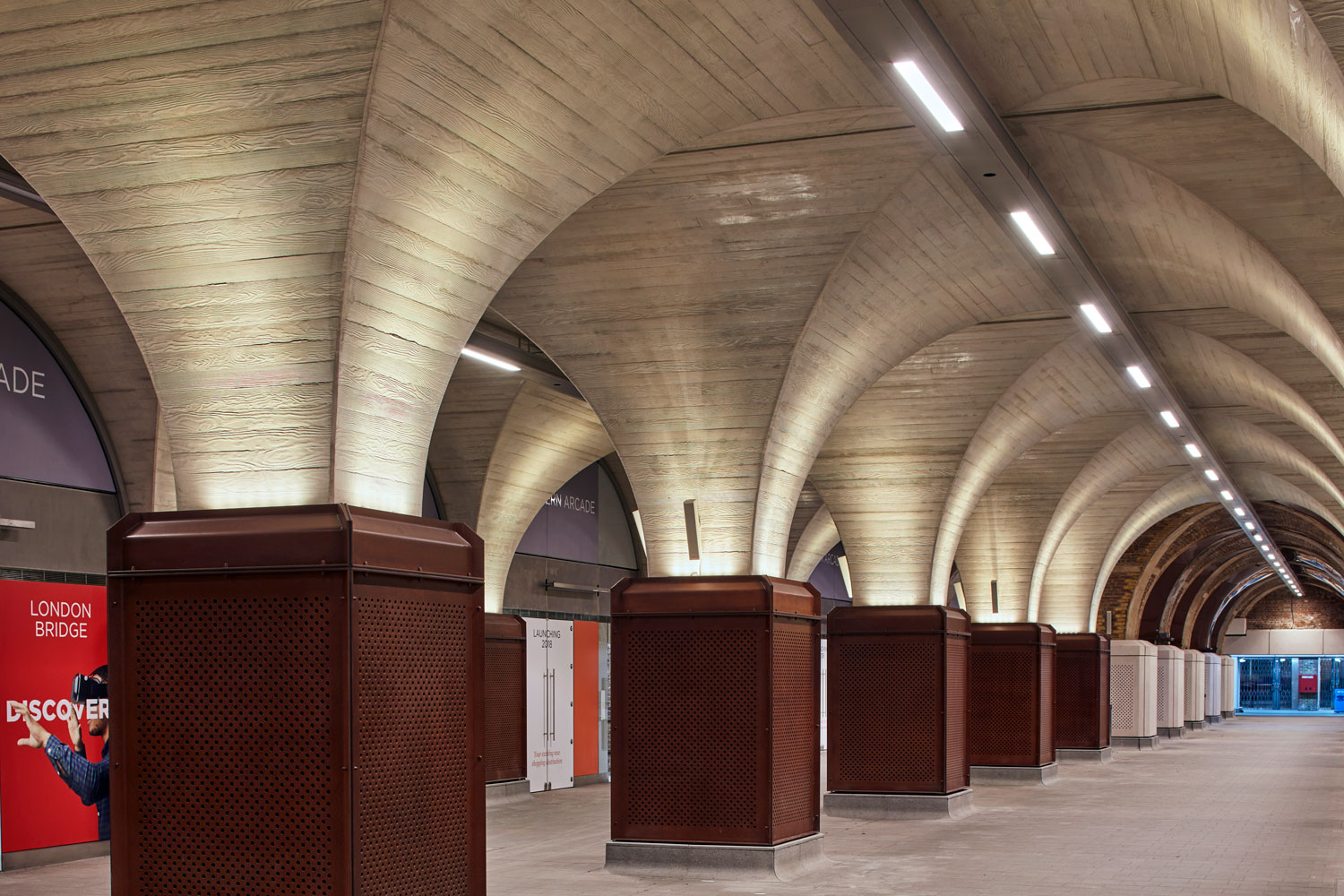
Darren Reed, Managing Director – Rail at WSP, said, “We are very proud of the comprehensive role we have played in delivering the Thameslink Programme and the iconic London Bridge station, a journey that began for us a decade ago. Robust early construction and operational planning combined with effective design and integration of every team involved in this complicated programme has allowed us to hit every major milestone while keeping the station open for millions of passengers.”
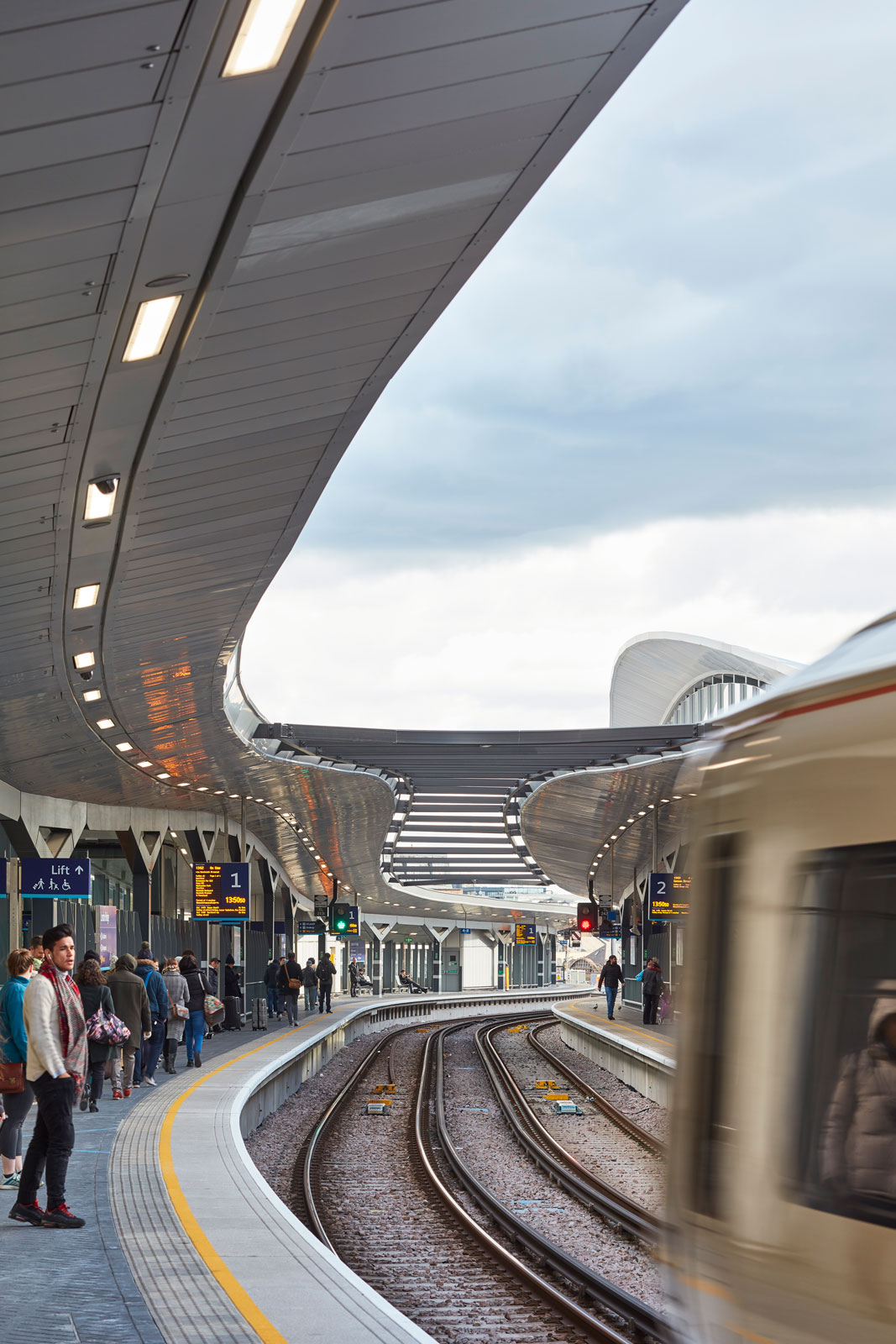
Chris Pike, UK Rail Director at Arcadis, said: “From reconfiguring track layouts to creating a new concourse that is two-thirds larger than before, the upgrade work at London Bridge station was a truly remarkable feat of design and engineering. London Bridge has an iconic status as one of the country’s key transport hubs, both in scale and in its unique heritage location, and it was important for us to respect this history, whilst also ensuring the station and our wider transport network is equipped to meet the demands of a growing population and modern passenger needs long into the future.”
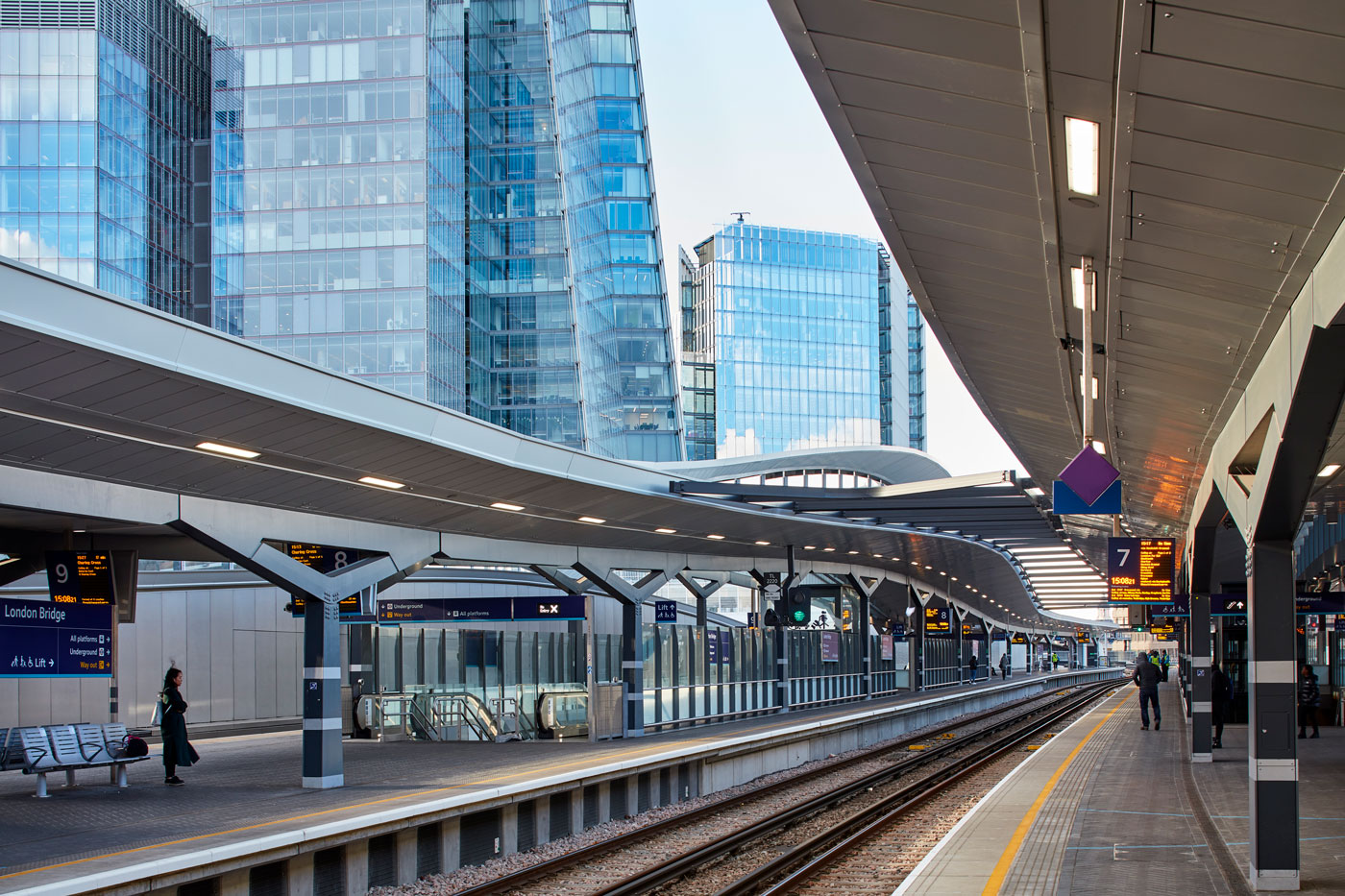
Simon Blanchflower, Major Programme Director at Network Rail said: “Working with Grimshaw, we’ve rebuilt London Bridge station, transforming central London’s oldest station into a station fit for the 21st century by making it modern, spacious and fully accessible. This has all been achieved while keeping London’s fourth busiest station open for the 50 million passengers that use the station each year. London Bridge is now a world-class transport facility. To be able to create such a striking and unique station despite all of the challenges presented by the project is a fantastic achievement.”

With an increase in ‘through’ platforms from six to nine and a reduction in terminus platforms from nine to six, London Bridge now offers increased capacity for the expected passenger numbers of up to 90 million per year.


